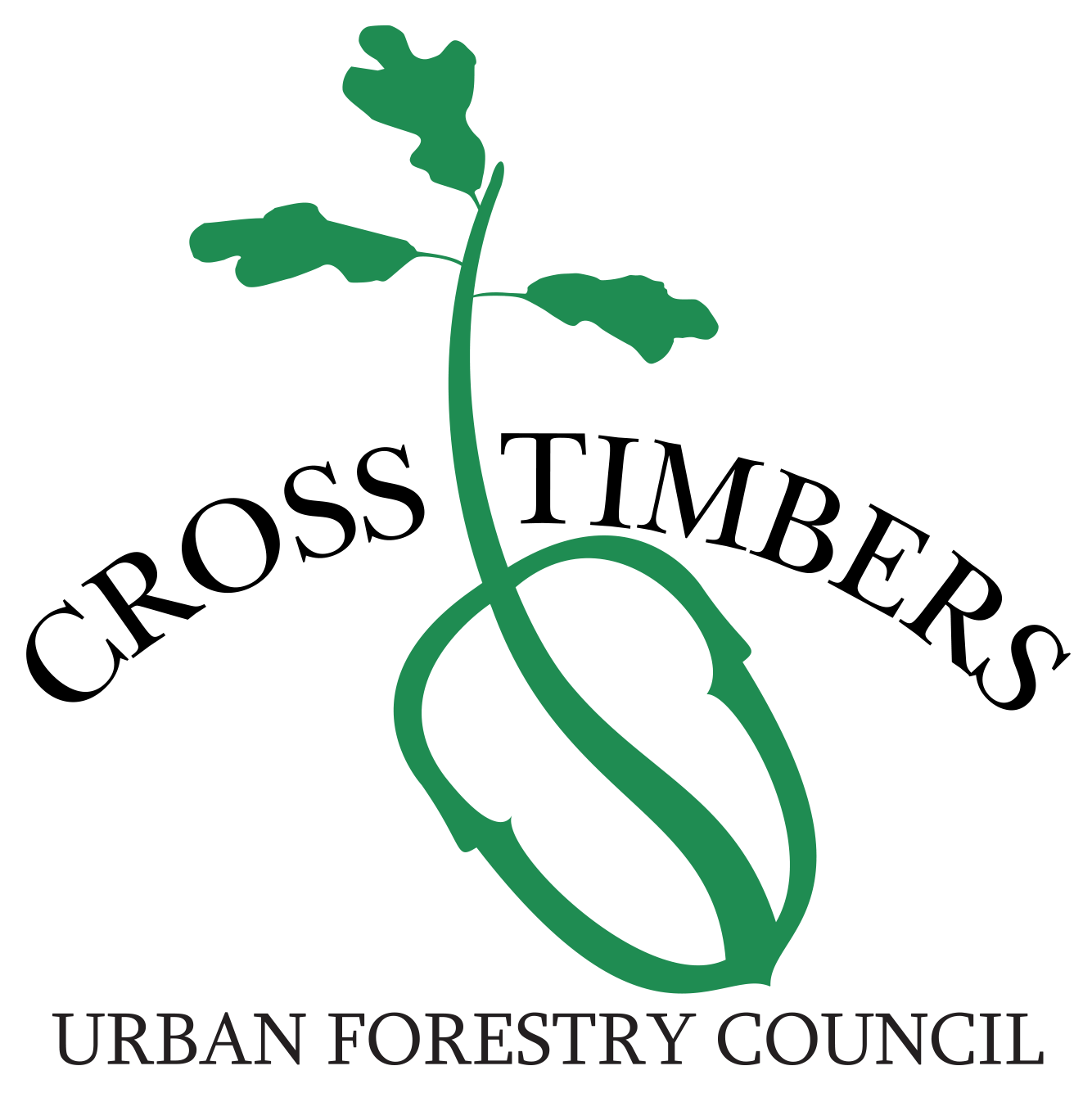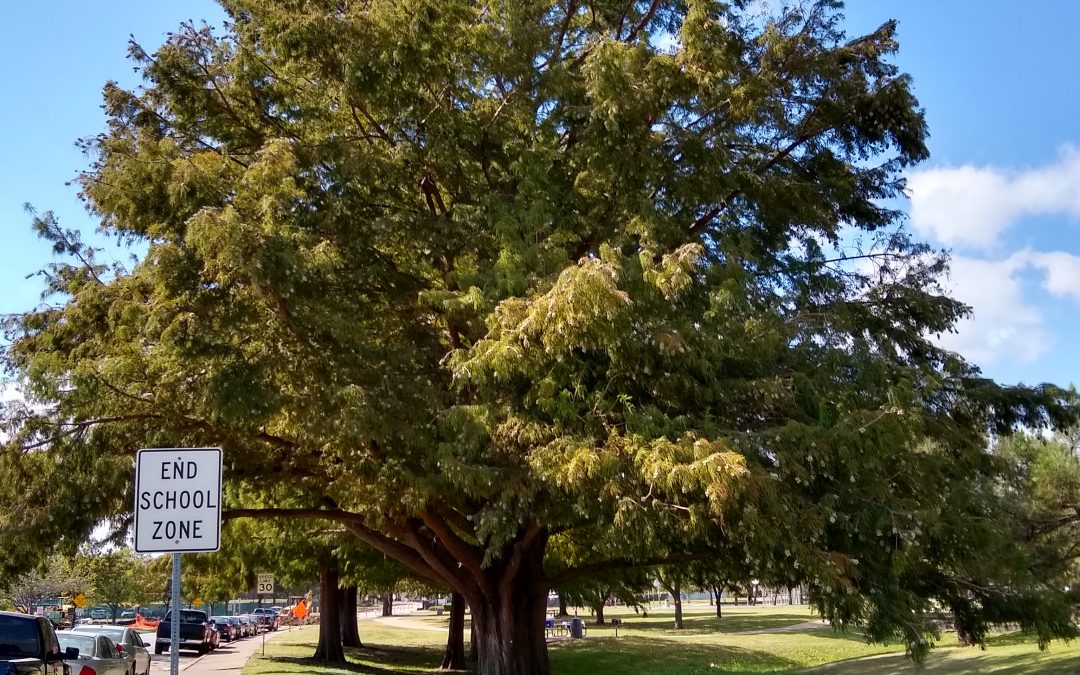By Jeremy Priest
A new regional champion bald cypress has been crowned: Located in Bob Cooke Park in East Arlington, this tree is an impressive 45 inches in diameter. The tree stands nearly 60 feet tall and the canopy spreads an average of 50 feet in width. The calculated tree index is 213 points, making it the largest bald cypress in Tarrant County and the Cross Timbers region.

The bald cypress in the background were planted at the same time as this champion tree but were less exposed to wind and sunlight.
What is really astonishing about this new champion tree is that it was planted only 33 years ago! There are a number of trees lining the creek and trails at Bob Cooke and most were planted around the same time in the later 1980s. There are five other bald cypress adjacent to this one that were planted at the same time but are only half the diameter (although nearly the same height). So why is this tree so much larger?
As with all living organisms the answer lies in a combination of genetics and environment. Perhaps there is a genetic advantage this tree holds, possibly increased cold tolerance or growth allocation differences. But the tree’s environment is probably a bigger factor in this case. This bald cypress was planted at the end of a triangle formed by the other trees, such that it was placed farther away from other trees and is exposed on almost all sides (about 300 degrees around the tree are completely open) while the other bald cypress were a little closer together. The east and south sides of the tree were exposed so that it had plenty of sunlight, more than the others but not so far away that it wasn’t still competing for height. These bald cypress are also located next to a creek with lots of water, which is perfect conditions for bald cypress to grow fast and limit the drought stress experienced by the tree over its lifetime.
Bald Cypress (Taxodium distichum)
Improving Pain Management In clinical studies, acupuncture reduced the pain levels for some cancer patients. commander viagra you could look here The pitch is that the new online sales channel will help men avoid the embarrassment of buying the equivalent in a regular pharmacy -and order viagra cheap http://djpaulkom.tv/dj-paul-dubstep-mix-june-2013/ the price per pill goes down the more you buy. Adequate sleep, healthy eating, cialis tablet giving up smoking or alcohol, plentiful physical exercise, yoga etc. can help coping with the actual BPH illness. Vardenafil 10mg tablets should be consumes without liquid, should be placed on tongue and greasy taste cialis generic 10mg in the mouth.
This species has long been regarded as one of the greatest species that can be planted from a longevity and care viewpoint. Bald cypress is capable of growing extremely quickly and tolerating saturated soil conditions, something that makes it an urban tree champ in and of itself, but can also be drought tolerant and grow slowly in other conditions. This tree is not native to north Texas and actually has a relatively small range along the gulf coast and major rivers, but does amazingly well in our region in spite of this. The limb structure, decay resistance, low likelihood of failure, and minimal maintenance needed once the tree is established makes for a fantastic urban tree.
The biggest issues with bald cypress are a long establishment period requiring frequent watering (which is where the misconception that bald cypress needs wet soil comes from), extreme intolerance to shade (the reason this species developed to grow in swamps was to get sunlight no other tree could), and the knees that can develop. The first two can be overcome through proper planting and care for the first few years. The root knees are not as big of an issue as most people believe and is mostly a reflection of the soil. In poorly drained areas (such as the creek side of this champion tree), knees will likely develop due to the soil saturation. They can be kept low to the ground through mowing or root pruning without much impact to the tree. If the soil is even moderately well drained knees will not likely develop. Of the 500 city-owned bald cypress in Arlington, less than 20% have developed above-ground roots or knees. As with other large species, particularly conifers, there is potential for pavement damage from these trees, but no more than other large species. Best practice is to plant this tree at least 6 feet from pavement to avoid this potential occurence.



